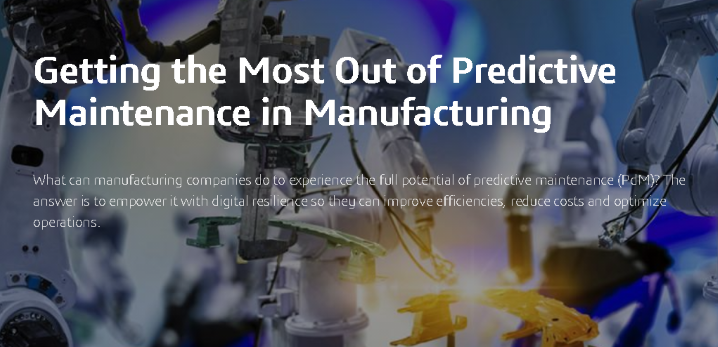Getting the Most Out of Predictive Maintenance in Manufacturing: Dassault Systemes
Building digital resilience in manufacturing
Manufacturers need to ensure that equipment runs efficiently to future-proof their operations. Recent crises, such as temporary factory shutdowns caused by the COVID-19 pandemic, have underscored the need for more agile and resilient operations.
This compels organizations to gain insights from connected, real-time and unexplored data sources to optimize and maintain equipment, prevent downtime and bring maintenance activities onto the cloud. To do so, they need to be supported by digital resilience.
They can seek such resilience in an integrated digital platform that helps increase the monitoring of equipment health and maintenance. This integrated platform does this by centralizing critical data, streamlining decision-making processes, and enabling data analysis to happen anywhere and anytime. All of this can lead to improved product quality that, in turn, improves product quality in manufacturing.
The role of PdM in manufacturing
Manufacturers are always looking for ways to minimize or avoid the costly impact of unexpected technical breakdowns, longer time to market, repair costs, and production inefficiencies. According to Deloitte, the dilemma that organizations face is that of choosing between:
- Running a machine until it fails
- Replacing a machine’s components early
PdM is a method of maintaining equipment health and performance using sensor devices that can solve this dilemma while adding significantly more value to manufacturing. Unlike other digital approaches to asset maintenance, PdM detects possible equipment defects and fixes them before they result in failure. In return, manufacturers can eliminate unnecessary costs associated with maintenance frequency.
Due to PdM’s capability in predicting when and how a component is likely to malfunction in the future, PwC says that PdM could help manufacturers:
- Improve uptime by 9 percent
- Reduce costs by 12 percent
- Reduce safety risks by 14 percent
- Extend an asset’s lifetime by 20 percent
The value of PdM can be increased through the virtual twin. By creating a virtual representation of an asset and incorporating its entire production environment and performance, manufacturers can evaluate the outcomes of what-if scenarios and recognize potential anomalies. It gives manufacturers a competitive advantage in achieving cost savings while reducing the risk of maintenance-related accidents as servicing is performed before potential mishaps related to asset failures occur.
Given the opportunities PdM offers and the advent of smart manufacturing, organizations, should adopt this approach to optimize their operations. However, implementing PdM in itself is a challenge that requires manufacturers to ensure their enterprises’ resilience through an integrated platform that can seamlessly execute PdM.
The five steps to successful PdM implementation
While the concept of PdM is enticing, organizations must acknowledge that they have varying degrees of maintenance maturity. To avoid organizations from impulsively buying into the concept, which may result in losses due to unpreparedness, we have summarized a step-by-step guide to implementing PdM successfully.
- Step 1: Determine business KPIs.
Prioritize areas of improvement to find the best tradeoff between costs and benefits.
- Step 2: Identify and validate the quality of data
Speed up data validation to ensure that it is useful for PdM.
- Step 3: Extract data insights.
Increase the quality of decision-making through accelerated collaboration.
- Step 4: Create the virtual twin of the production environment
Understand patterns and mitigate potential setbacks well before execution.
- Step 5: Optimize decision-making processes
Reconfigure plans confidently with the best decisions. After organizations have considered these five steps, they will be in a better position to experience a new level of efficiency by combining digital resilience with PdM and enabling their teams to collaborate on a single platform. This is what makes a successful PdM implementation.
Boost PdM potential with the 3DEXPERIENCE platform
Manufacturers can implement PdM successfully when they are supported by a resilient, integrated digital platform that offers a suite of collaborative digital solutions to boost workforce optimization – the 3DEXPERIENCE® platform.
The platform also scales with businesses and helps achieve positive returns on investment, wherever they are in the maintenance maturity levels. This way, manufacturers are empowered to improve maintenance efficiency, increase customer satisfaction and deliver high-quality products. It also serves as a single source of truth that accelerates collaboration to increase asset health visibility and optimize the workforce.
A successful PdM implementation happens with the support of our platform because it advances resilience through collaborative digital tools, providing manufacturers with support in their maintenance activities and operational strategies.
This content was originally published on the Dassault Systemes website.

